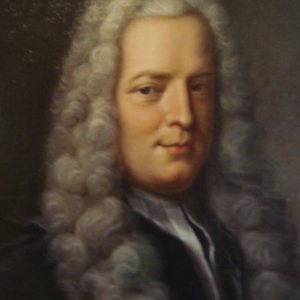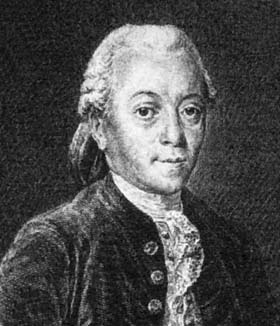<Back to Index>
- Mathematician Gabriel Cramer, 1704
- Mathematician Étienne Bézout, 1730
PAGE SPONSOR

Gabriel Cramer (31 July 1704 – 4 January 1752) was a Swiss mathematician, born in Geneva. He showed promise in mathematics from an early age. At 18 he received his doctorate and at 20 he was co-chair of mathematics. In 1728 he proposed a solution to the St. Petersburg Paradox that came very close to the concept of expected utility theory given ten years later by Daniel Bernoulli. He published his best known work in his forties. This was his treatise on algebraic curves, "Introduction à l'analyse des lignes courbes algébriques", published in 1750. It contains the earliest demonstration that a curve of the n-th degree is determined by
- n(n + 3)/2 points
on it, in general position. He edited the works of the two elder Bernoullis; and wrote on the physical cause of the spheroidal shape of the planets and the motion of their apsides (1730), and on Newton's treatment of cubic curves (1746). He was professor at Geneva, and died at Bagnols - sur - Cèze. He did extensive travel throughout Europe in the late 1730s which greatly influenced his works in mathematics.
He was the son of physician Jean Cramer and Anne Mallet
Cramer.

Étienne Bézout (31 March 1730 – 27 September 1783) was a French mathematician who was born in Nemours, Seine - et - Marne, France, and died in Basses - Loges (near Fontainebleau), France.
In 1758 Bézout was elected an adjoint in mechanics of the French Academy of Sciences. Besides numerous minor works, he wrote a Théorie générale des équations algébriques, published at Paris in 1779, which in particular contained much new and valuable matter on the theory of elimination and symmetrical functions of the roots of an equation: he used determinants in a paper in the Histoire de l'académie royale, 1764, but did not treat the general theory.